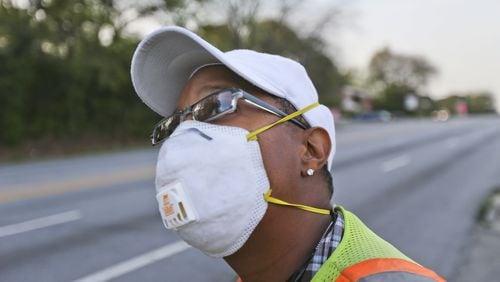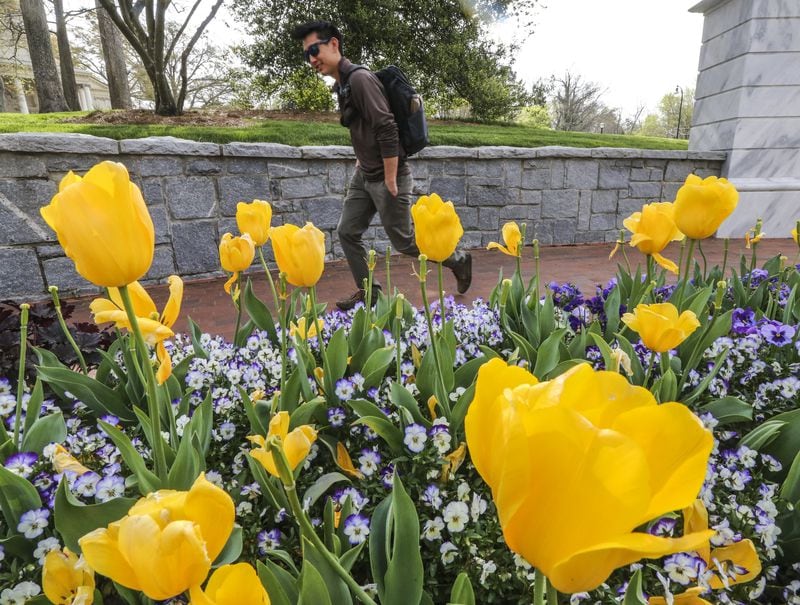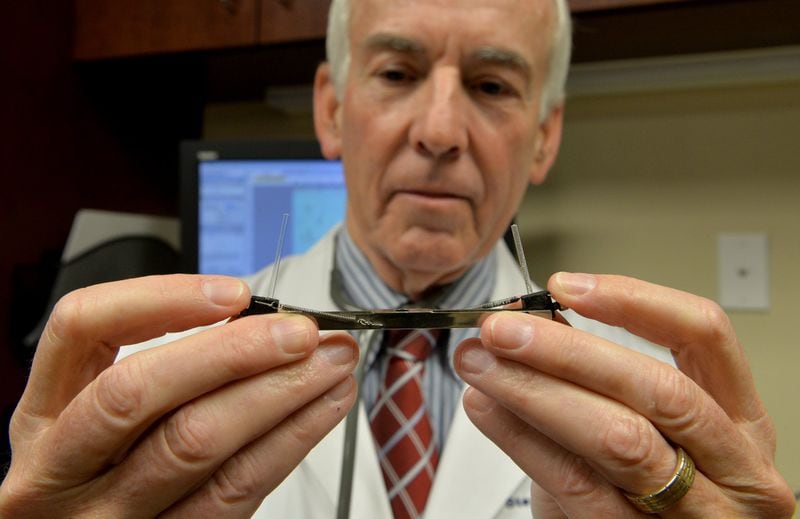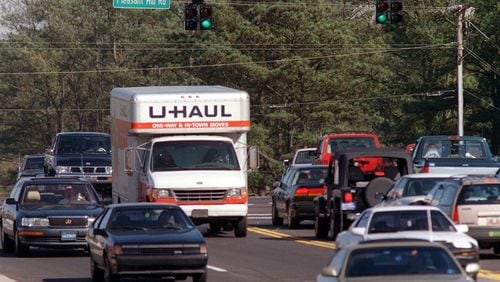It is not your imagination.
The allergy season really is getting worse.
In Atlanta, a combination of factors, from climate change to automobiles to perverse choices by gardeners, are conspiring to turn your eyes and nose into a rheumy, runny battlefield.
You probably took note of this back in April when the pollen count reached 5,354, or almost 50 times what allergists call "high."
Well, don't expect relief anytime soon. Though April brings the most tree pollen, we are now into grass and ragweed season. "May is a peak time for a lot of people," said Sanaz Eftekhari, of the Asthma and Allergy Foundation of America, which is why her group declares May National Asthma and Allergy Awareness Month.
The Atlanta Journal-Constitution talked to allergists, climate, forestry and environmental experts and to people who sneeze, to learn why the allergy season is getting worse.
The most significant change for those with plant sensitivity is the fact that the allergy season is longer. Though Atlanta’s spring was cool this year, on average pollen seasons are starting two weeks earlier, and are lasting later into the fall, as warming temperatures hasten first blooms and delay first frosts.
The National Climate Assessment, part of the U.S. Global Change Research Project, determined that some parts of the U.S. have seen the grass and ragweed pollen season grow by anywhere from 11 to 27 days between 1995 and 2011. (Channel 2 Action News proves a daily pollen count at WSBTV.com.)
Atlanta’s allergy sufferers might wipe their itchy eyes in disbelief, but according to the Asthma and Allergy Foundation of America, Atlanta doesn’t make the top 10 most allergic cities, or even the top 50, landing at No. 76 this year.
What makes that strange is that Atlanta has the most tree cover of any major city in the U.S.
“A lot of it has to do with how many different forest types are present,” said Brian Williams, urban forestry director for the nonprofit Trees Atlanta. Louisville, Ky., a perennial top of the list, is on the boundary between the Southern, Midwestern and Northeastern forest communities, giving it a greater diversity of tree species, and a longer pollen season, said Williams.
Other list-toppers, like McAllen, Texas (No. 1 this year), are hotter and drier, so that pollen blows around longer. Atlanta’s rains tend to scrub pollen out of the air.
Yes, despite the problems, we love our trees. We also love our cars, but they cause problems, too.
Vehicles recently surpassed power plants as the largest polluters in Atlanta, according to Brian Gist, an attorney with the Southern Environmental Law Center. Gist also said that parts of Atlanta are currently failing to meet the Environmental Protection Agency's ozone standards. Atlanta has already had a "code orange" day of unhealthy air, which means allergy sufferers may be in for a long, hot summer.
Ozone and other pollutants can hit allergy sufferers with a triple whammy. They can trigger allergic reactions in folks who already have allergies, according to Eftekhari. The rise in carbon dioxide levels also prompts plants to produce more pollen.
And a 2016 German study demonstrated that some pollutants can cause plants to produce pollen with stronger allergens. In Atlanta, the trees and the cars could be ganging up on your nose.
If Atlantans drove less, would that change the incidence of breathing difficulties?
In the summer of 1996, scientists discovered the perfect moment to test that hypothesis.
Before the Olympics commenced in July and August of that summer, Atlantans were warned not to drive downtown. Traffic was reduced dramatically.
During the 17 days of the Games, the number of children admitted to emergency rooms with asthma attacks dropped 44 percent, according to a study published a few years later. When the Games were over and people started driving downtown, the number went back up again.
In a city of long commutes and several million cars, allergies will continue to plague us.
Our choices aggravate allergies in other ways. Pollen is discharged by male trees, and contains the male gametes, sent out, by wind or by insect, in search of its female counterpart.
According to Dr. Clifford Bassett, an allergist and assistant professor of medicine at New York University School of Medicine, gardeners often overplant male trees because they produce less debris, including berries. More male trees, more pollen.
Some Georgia nurseries are also expanding the pollen season by marketing Chinese elms, a graceful tree that releases its pollen in the fall instead of the spring.
For people sensitive to tree pollen, that’s an encore performance that they don’t want to experience.
Atlanta allergist Dr. Stanley Fineman, past president of the American College of Allergy, Asthma & Immunology, said about 25-30 percent of adults and 30-40 percent of children have allergy problems. It’s not clear whether those numbers are going up, he said.
What is happening is adults who’ve never had plant allergies before are developing them in their later years. “We find people in their forties, fifties, sixties and beyond (who) have seasonal allergies for their very first time,” said Bassett on his website.
Another discouraging fact: You might find yourself with seasonal allergies if you move to a new place. For example: that pollen hothouse, Atlanta.
“It is anecdotally known that a new area with new pollinating trees could make you to sensitive new allergens that you weren’t exposed to before,” said Eftekhari.
Damodar Selvam, 29, never had a problem in his native Bangalore, India, but after he first came to Atlanta in 2016, he encountered mulberries and oaks and other trees he hadn’t seen before. And he had his first bout of spring fever.
When he’s indoors, the IT engineer can breathe easily, but when he goes outside on the weekends to join his cricket team, the Bazookas, the pollen has been a killer. “It’s a nightmare.”
In this fight of the plants against the transplants, Selvam isn’t giving in. “I’m not going to run away from these trees,” he said. “I’m staying here.”
BY THE NUMBERS
The 5,354 pollen count recorded on April 12 was the highest in three years. Here are the peak spring pollen counts for the past five years, and the number of days in that year’s spring season with high or extremely high counts:
2018: April 12: 5,354; 49 days of high or extremely high pollen counts (so far).
2017: March 31: 3,559; 57 days.
2016: March 29: 4,106; 61 days.
2015: April 9: 6,152; 47 days.
2014: April 4: 5,230; 55 days.
Source: Atlanta Allergy & Asthma









